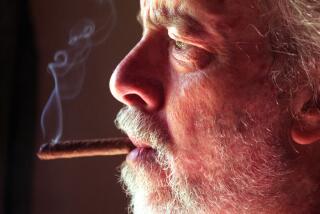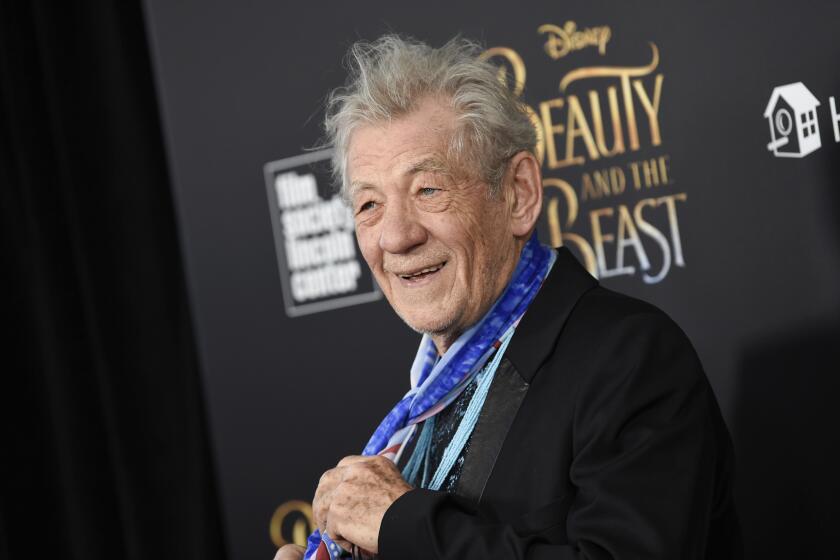‘Tristan’ graduates from a project to a triumph
The Place de la Bastille is a historical setting for revolution, a favorite spot for skateboarders who take their cue from Venice Beach, and home of this city’s modern opera house.
Mix all of the above -- revolution, L.A. and opera -- and what do you get? The “Tristan and Isolde” from the Los Angeles team of conductor Esa-Pekka Salonen, director Peter Sellars and video artist Bill Viola that opened this week at the Opera Bastille.
Gerard Mortier, the controversial and feisty former head of the Salzburg Festival in the midst of his first season running Paris Opera (which occupies both the Bastille and the venerable Palais Garnier), has made this “Tristan” the symbol of his regime. It is the most expensive production the company has ever mounted. It is the hottest opera ticket in Europe.
And for the angry traditionalists who hate Mortier and hope to see him fail, the opening Tuesday was a very bad night. They might as well go out and shoot themselves right now, although instead they will most likely continue hiring claques to boo the first nights of all his new productions.
Forget them. Tuesday may well go down as the date a triumphant “Tristan” brought Wagner meaningfully into the 21st century.
This new production of one of the most important, most revolutionary and most probed operas ever written is the full staging of the Los Angeles Philharmonic’s thrilling “Tristan Project” at Walt Disney Concert Hall in December. But even those extraordinary semi-staged concert performances, given an act at a time over three days, could not prepare one for the profound depth of expression produced on the Bastille stage.
Unlike in L.A., where the singers were (like Salonen, Sellars and Viola) Wagnerian raw material, Paris engaged a famous Tristan and Isolde, and the worry was that Ben Heppner and Waltraud Meier would be set in their ways at this point in their careers. And mightn’t one grow weary of the video over a very long evening?
In fact, under Sellars’ direction, Meier and Heppner found so much dramatic intensity and sheer depth of characterization that it was as though something inside them had opened up, as though they had learned, after all these years, who they really are as singers and human beings and what they can do.
Sellars’ staging focuses entirely on the singers. Other than the large video screen (horizontal in the first two acts, vertical in the third), the set is black and bare but for a small platform in the center. The characters are dressed in unshowy but elegant costumes (designed by Martin Pakledinaz), black in the first two acts and with a bit of muted color in the third.
Viola’s video, meanwhile, looks brilliant, far more so than was possible in Disney, where light bled from the orchestra’s music stands. Yet it is astonishing just how much attention the singers compel, how well they interact with the slowly unfolding ceremony of death and transfiguration taking place in Viola’s vision.
In the first act, as the couple onscreen slowly disrobe and undergo a ceremonial bathing, a purifying ritual in preparation for death, the opera’s Tristan and Isolde have their first encounter. As their mutual hatred erupted into frightening, unexpected love, Meier’s sarcastic, destructively angry Isolde forced Tristan to see her, fear her, need her, love her, trust her, and all those feelings were conveyed with elemental force. Looming large above them were another Tristan and Isolde, past it all, ready to enter another realm, calling the lovers to a higher purpose.
How this plays out, with Viola’s searing images serving to remind us of the inner, spiritual life of two unexpectedly real people onstage, is ultimately what makes for a completely new kind of operatic experience.
Not everything, perhaps, is fresh. Meier’s voice can turn cold and steely; Heppner took a while to warm up Tuesday. But such concerns are irrelevant when Tristan’s dying becomes the wrenching of the life force out of the body made visceral, when Isolde’s “Liebestod,” sung with a rapt stillness and focus -- as the body of the video Tristan slowly rose through water -- made this the most transfixing Wagner in my experience.
Salonen, for his part, drastically slowed his tempos, giving the singers room for nuance, encouraging them to dig ever deeper. He too has dug deeper into the opera since conducting it for the first time four months ago.
Sellars has retained a few elements from the Disney presentation -- including turning the house lights on at the end of the first act as the ship lands and reality suddenly hits the confused lovers lost in themselves. He also uses the hall as he did Disney, placing the chorus and some singers and offstage musicians in the upper balconies.
With the exception of the orchestra, which could be quite rough around the edges but compensated with a tart French sound, this was a performance and production in which absolutely everything mattered. For instance, James F. Ingalls’ lighting, which illuminates the singers without interfering with the video, makes the whole thing possible.
The supporting cast was strong. Yvonne Naef was a nurturing Brangane, Jukka Rasilainen a vigorous Kurwenal, Franz-Josef Selig a tortured King Marke.
Mainly, this is a “Tristan” that dares look at the toughest issues facing everyone: how to live, how to love, how to die. These are not, for Sellars and Viola, separable. Each is a miracle, with death in this “Tristan” the final miracle of life.
It will be two years before the L.A. Philharmonic reprises “Tristan” (the third stage in this ongoing “project”). If that seems like a long wait for an incomparable theatrical experience, you could try getting to Paris, where the production is scheduled to return in November with a different cast and Valery Gergiev as conductor. But take heart. It could well be a very long time before something this great comes our way again on the lyric stage.
More to Read
The biggest entertainment stories
Get our big stories about Hollywood, film, television, music, arts, culture and more right in your inbox as soon as they publish.
You may occasionally receive promotional content from the Los Angeles Times.







